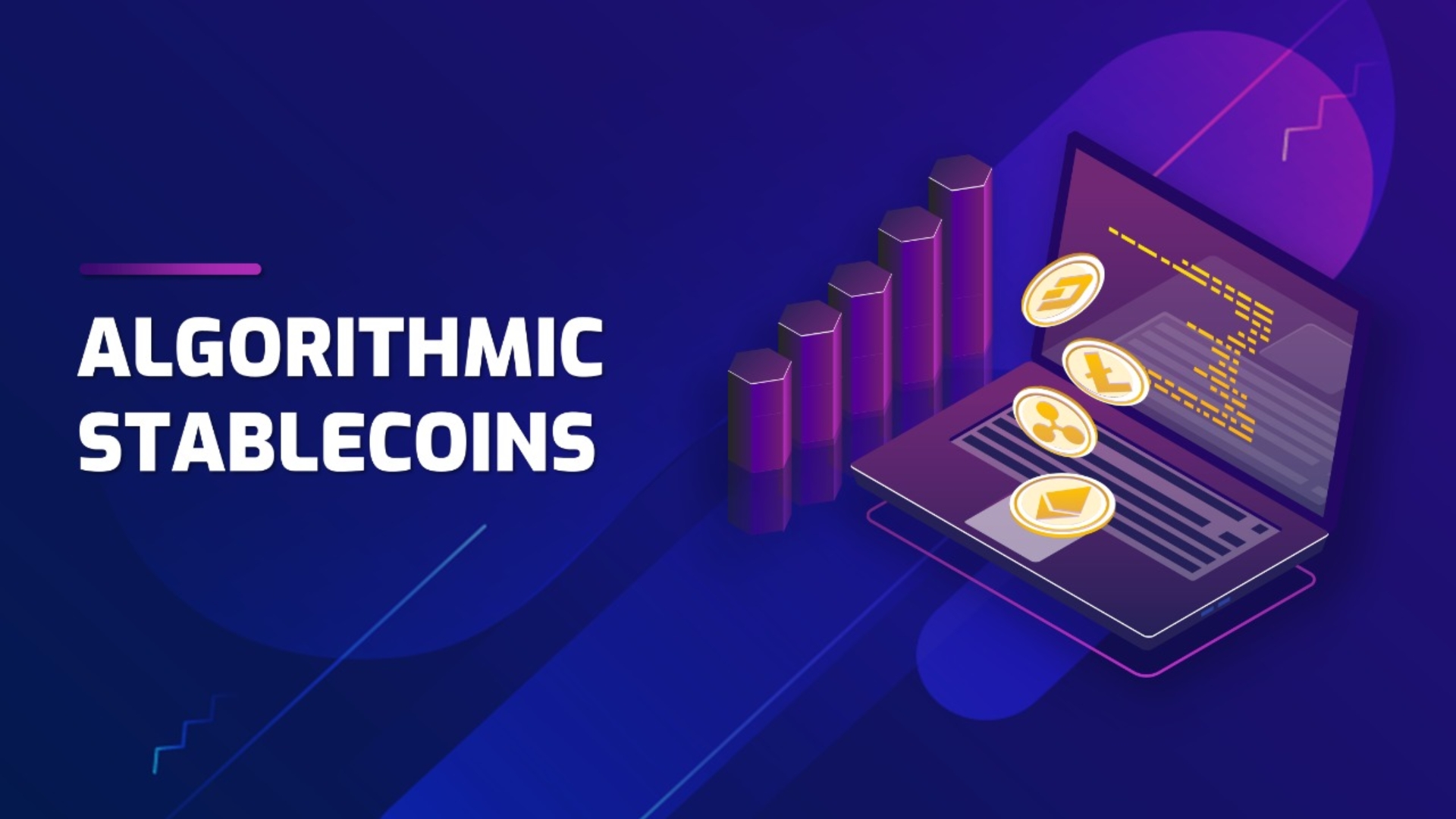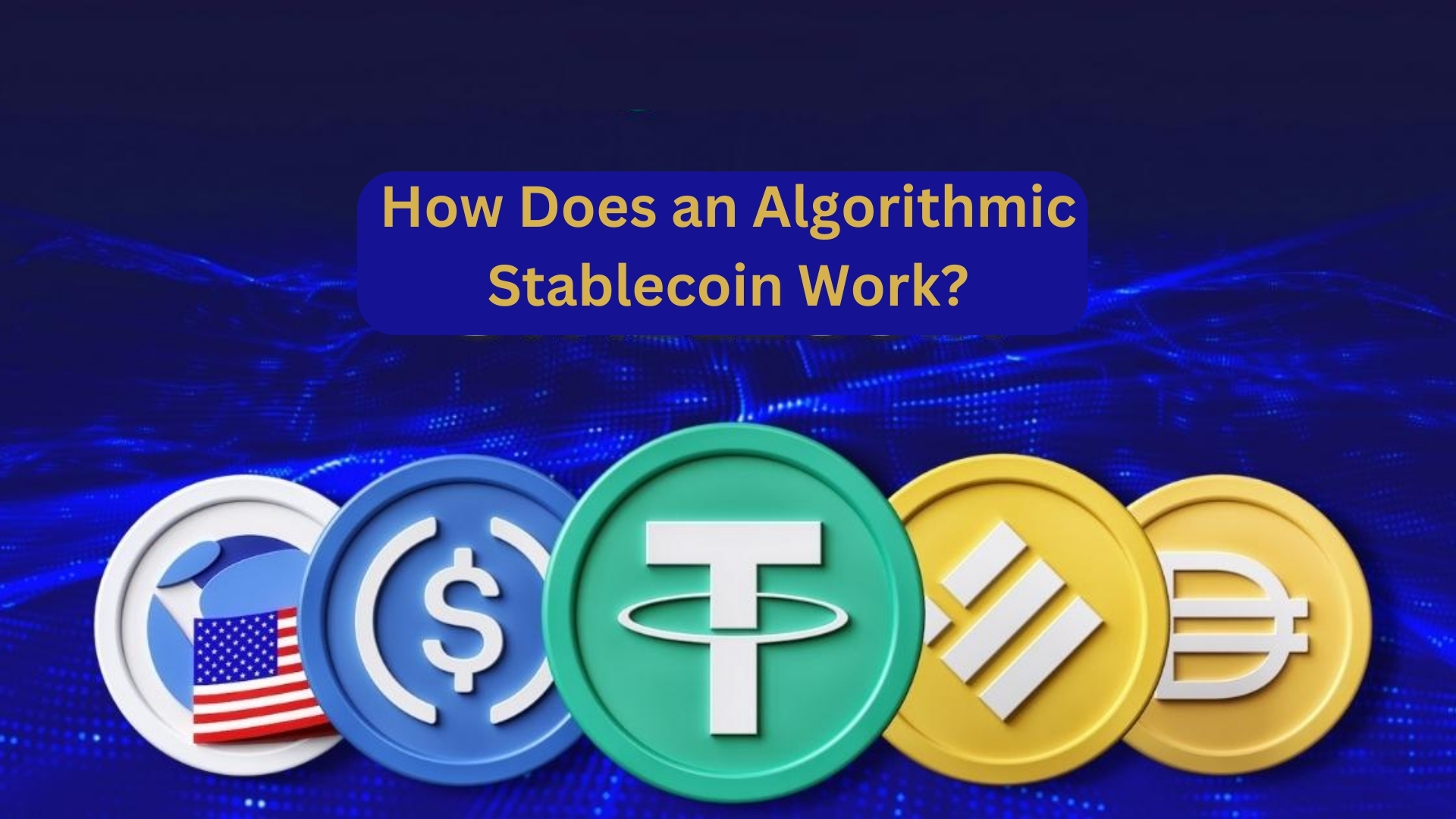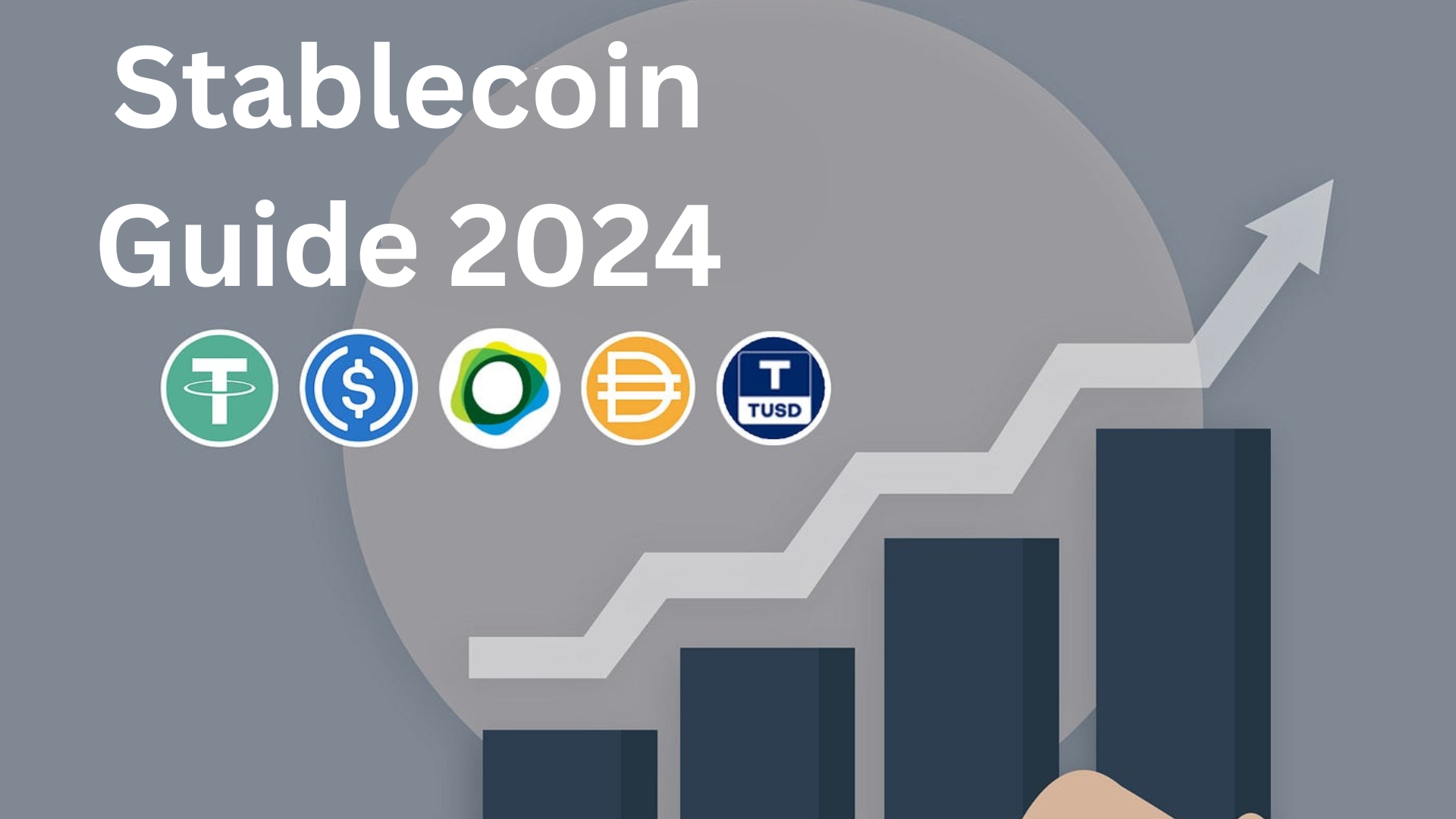Algorithmic Stablecoins: A Beginner’s Guide 2024

Algorithmic Stablecoins are cryptocurrencies backed by the US dollar and built on the blockchain. Because there are reduced costs associated with functioning on the blockchain, they are used as vehicle currencies for exchanging cryptocurrency assets. The three main objectives of stablecoin designs are decentralization, capital efficiency, and peg stability. Tether heads a centralized stablecoin with less liquid assets and commercial paper than its peers. Centralized stablecoins, headed by Tether and including less liquid assets and commercial paper on their balance sheet, are the most common. The MakerDAO’s ETH$2,294.19 in positions with excessive collateral. Despite being decentralized, they are less capital-efficient than their centralized counterparts.
The third class, which includes under-collateralized algorithmic stablecoins, is headed by TerraUSD. A cryptocurrency controlled by algorithms, or smart contracts, is known as an algorithmic stablecoin. Its purpose is to dynamically lower a particular asset’s price volatility, such as the US dollar. Terra, a Cosmos-based system, powers a collection of algorithmic stablecoins that use the coin. LUNA$0.62 to maintain their hooks. Despite having a more capital-efficient design, TerraUSD has two drawbacks: it trades at a substantial discount and is susceptible to speculative attacks.
Why do we need algorithmic stablecoins in light of these drawbacks? Algorithm-based stablecoins depend on visible and auditable code, which raises the likelihood of winning support. But to fully realize their potential, you’ll need to be aware of the various algorithmic stablecoins, the factors that influence their performance, and the associated risks (more on this later). This piece will address algorithmic stablecoins’ function, varieties, and stability and respond to whether they represent a secure investment.
How Does an Algorithmic Stablecoin Work?

Algorithmic stablecoins like a “two-coin” method “absorb” market volatility while maintaining the peg. This balancer or sharing token is exchanged on secondary decentralized exchanges (DeXs) like Uniswap. UNI $6.19. Terra formerly employed only two coins, but now it uses Bitcoin BTC $42,721.10 as a buffer for its rigorous methodology.
Two-coin algorithmic stablecoin ecosystem? We can learn from Terra’s network. Luna, a governance token, and TerraUSD, a stablecoin, comprise the Terra blockchain system. Their combined action keeps TerraUSD’s market value stable. Luna holders benefit from stablecoin prices rising above $1 due to investor interest.
Conversely, traders earn by trading the coin for $1 Luna when its value declines. A decrease in supply raises prices. The European Central Bank’s crypto-asset working group defines algorithmic stablecoin value as “the expectation of its future market worth.” The ecosystem starts with algorithmic stablecoin demand support. However, the mechanism fails when demand drops too low.
History shows that financial product support is not guaranteed, especially in times of crisis. The 1:1 USD pegged token went much below its predicted $1 value in April 2021, causing Fei to fall 80% from its hopeful purchasing price. Second, algorithmic stablecoins maintain a “stable” ecosystem by rewarding private individuals for price-stabilizing arbitration. Relying on autonomous market participants to fix prices through legally-free discretionary arbitrage is just as risky.
Algorithmic Stablecoins Types
What follows is a discussion of the three main types of algorithmic stablecoins.
Rebasing algorithmic stablecoins
Instead, the rebase mechanism automatically corrects, stabilizing the price of a target stablecoin towards a predetermined peg, like $1, over time. To alter the token supply, the Ampleforth protocol includes a function known as rebasing. Because of this, the amount of AMPL tokens in your wallet will fluctuate every 24 hours according to the weighted average of the token price.
Seigniorage algorithmic stablecoins
In the seigniorage share model, algorithmic stablecoins and seigniorage ownership are the two leading cryptocurrencies. Shares are used to increase the quantity of coins when the price of a currency exceeds the intended peg.
These two cryptocurrencies are examples of seigniorage-style stablecoins, which offer a redeemable bond to buyers when the price drops below a certain level. The main objective of the Basis Cash protocol is to maintain a constant BAC price through supply management. It operates as follows: To compensate BAS holders, the system creates new tokens whenever the value of basis cash exceeds its $1 fixed point. Because of this, the selling pressure is much greater, and the price is falling. When the price of Basis Cash drops below its $1 fixed value, the system will automatically reward users with bond tokens at a 1:1 ratio if they burn their tokens.
Fractional algorithmic stablecoins
The characteristics of fully algorithmic and fully collateralized stablecoins are combined in fractional-algorithmic stablecoins. These stablecoins minimize custodial risks and stay away from over-collateralization. In contrast to algorithmic designs alone, its primary goal is to impose a more stable, fairly tight peg. As the first stablecoin to employ the partial-collateral protocol, Frax has a two-token design with FXS as the governance token and FRAX as the $1-pegged stablecoin.
Pros and Cons of Algorithmic Stablecoins

Some financial inventions, like algorithmic stablecoins, are purposely unstable. A complicated array of complex derivatives pushed by securitization nearly collapsed the global financial system in 2008. The cryptocurrency sector collapsed once TerraUSD fell. How secure are algorithmic stablecoins? The pros and cons of algorithmic stablecoins should help us answer this issue.
Pros of algorithmic stablecoins
Algorithmic stablecoins are decentralized since the financial system’s regulations are in the code. No regulatory bodies monitor users’ transactions. Since algorithmic stablecoins do not use physical assets, human errors are eliminated. Algorithmic stablecoins restored seigniorage to the crypto ecosystem, allowing one to assess currency manufacturing profits and losses.
Cons of algorithmic stablecoins
The design of algorithm-based stablecoins is incorrect. Uncollateralized digital assets use algorithms, financial engineering, and market incentives to peg the price of a reference asset, putting them at risk of de-pegging. Additionally, algorithmic stablecoins have three issues. The demand must exist for stable cryptocurrencies to work. System failure occurs when demand drops below a specific amount. Second, stablecoins rely on individual investors who want TerraUSD’s value to climb against the dollar. Traders reacting to confusing information and uncertainty can devalue this stablecoin during crises. Herd mentality could sell the stablecoin, causing a sharp price drop.
Terra stablecoin (UST) uses two-token seigniorage to sustain Terra and Luna prices. Luna is Terra’s native token, so burning $1 of Luna creates $1 of TerraUSD stablecoins. Luna tokens can be used for governance voting, blockchain transaction confirmation, and DeFi lending protocols. After TerraUSD lost its dollar backing, algorithmic stablecoins were disputed. I don’t understand Luna and UST—UST’s drop below $1 started a deep dive.
The Luna Foundation Guard bought UST and sold BTC to reestablish the peg, while attackers dumped UST. Bitcoin’s price fell after the crypto crash and UST debugging. In the panic, many tried to sell UST on exchanges at cheaper prices, adding sell pressure and depreciating it. To recap, the UST sell-off increases LUNA circulation and lowers its price. After the Terra ecosystem disaster, global lawmakers and bureaucrats sought algorithmic stablecoin legislation to prevent a cryptocurrency market disaster.
Metrics for the Success of Algorithmic Stablecoins
A rundown of the top algorithmic stablecoins is where most of the conversation around explaining algorithm-based stablecoins is going. Nevertheless, understanding the unique elements that determine the efficacy of algorithm-based stablecoins is crucial. The most critical parts of analyzing algorithm-based stablecoins and measuring their performance are here.
It is very challenging to compare various protocols for algorithm-based stablecoins. It might be helpful to assess the essential features of market design, token design, and mechanism design to determine how practical algorithm-based stablecoins are. These are some of the most crucial considerations for evaluating algorithmic stablecoins.
Governance
Theoretically, a DAO structure is present in many algorithm-based stablecoin protocols. Nevertheless, only a few protocols have a robust community that regularly approves enhancement requests. For non-collateralized stablecoins, a functional smart contract for governance may appear to be the best option. On the other hand, providing sufficient governance privileges to all stakeholders and ensuring equitable token distribution are both crucial. Numerous algorithmic stablecoin schemes adhere to a method of de facto centralization of governance.
Incentives
Specific algorithm stablecoin protocols opt for the rebase approach when ensuring the active alteration of multiple tokens in a user’s wallet. Conversely, some protocols try to provide returns on alternative investment vehicles, such as coupons, by adjusting the supply and demand. Consequently, incentives are challenging to consider when finding the most effective algorithmic stablecoins. Why? In addition to the ever-changing aspects of human psychology and the economy, there is also the inherent volatility of the cryptocurrency market. Stability is the sole obvious benefit of stablecoins at the moment.
Token Adoption
An algorithmic stablecoins list’s optimum candidates are defined in part by the element of token adoption. There is a hard cap on the number of DeFi initiatives that use most protocols. The adoption does not apply to Automated Market Makers because they do not require clearance from the partner protocol. Because of this, algorithm-based tokens become less valuable and less accessible to potential new users. Stability concerns may arise from slower liquidity growth caused by low token adoption rates.
Accuracy
For various complex reasons, algorithmic stablecoins have difficulty keeping the peg. Some protocols may become so unmanageable that they enter a “death loop.” Therefore, a significant protocol is required to assist the protocol in escaping the ‘death loop.’
Algorithmic Stablecoins Risks

Identifying the dangers of non-collateralized stablecoins would be essential to explaining them. Using Basis, an uncollateralized stablecoin, as an example, we can see the many dangers connected with algorithm stablecoin protocols. Some of the most significant dangers associated with stablecoins based on algorithms are listed here.
Increase in Supply
Weren’t The finest algorithmic stablecoins supposed to be designed with supply-and-demand equilibrium in mind? In what ways could it endanger token holders? The algorithm creates additional tokens to enhance supply whenever the price rises above a fixed value. In the instance of Basis, there are Share tokens that, should the supply expand, would let the holders of the shares acquire newly created stablecoins.
Conversely, bondholder payments must be made before shares can receive fresh tokens. The value of the shares increases when newly created tokens are paid for, although this highly depends on rising demand. If demand growth slows down, the value of shares will decrease since additional stablecoins must be created.
Reducing Supply
The hazards of algorithmic stablecoins are already substantial, and the decrease in supply is an additional significant concern. Using “bonds” is a typical method for limiting the supply of algorithm-based stablecoins. These bonds are sold on the open market at a price lower than the fixed, predetermined value. Stablecoin is used to pay for the bonds, and the promise to return one stablecoin later is made. On the other hand, bond purchasers must have faith that the bonds will pay out at a specific date.
Oracles
Among the many potential dangers of algorithmic stablecoins, oracles rank high. The price data associated with the relevant stablecoin is provided via Oracle contracts. After that, the algorithm considers price information and ensures the supply is adjusted accordingly. Trust, honesty, and accuracy are three factors that can make selecting and implementing oracles quite challenging.
Broken Pegs
Last but not least, damaged pegs are a problem with non-collateralized stablecoins. Uncollateralized stablecoins are highly vulnerable to peg breaks, which can happen to any stablecoin. Why? Market confidence is crucial to their success. A coin or token may eventually go extinct if investors lose faith in it. To recover successfully from two significant peg breaks would be an enormous challenge for any stablecoin.
Notable Examples of Algorithm-based Stablecoins
Gaining knowledge from top algorithmic stablecoin examples could make algorithm-based stablecoins easier to understand. If you want to know more about the features of algorithm-backed stablecoins, here are a few of the most recent arrivals to the market.
RAI
With RAI’s stablecoin protocol, you can forego the fiat-pegging feature of stablecoins. It has several characteristics with MakerDAO’s deprecated, single-collateral DAI. A “safe,” similar to DAI vaults, would be available for users to deposit Ethereum. For this example, inside the algorithmic stablecoins list, the minimal collateralization rate is slightly less than 150%. Users would then be rewarded with RAI tokens. An integral part of the RAI algorithm is a specific PID controller that inputs the current price. It follows a continual feedback loop to modify supply in response to price.
Most crucially, the system has all the parameters hard-coded in, so it can respond automatically to market data without any human interaction. Aside from the value-added feature of “self-peg,” RAI differs significantly from DAI’s governance structure. Its goal is to reduce reliance on governance by 2022 by removing certain governance elements from the process.
FEI
On the subject of algorithmic stablecoins, FEI is yet another noteworthy protocol. The case of stablecoins like DAI highlights the capital inefficiencies that must be addressed. FEI stands out from other algorithm-based stablecoins in a big way. One of the most noticeable distinctions is the lack of a system to exchange collateral for stablecoin. Contrarily, a bonding curve that trades FEI for ETH is the entry point for digital wealth into the system.
Through its management of liquidity on exchanges such as Uniswap, PCV contributes to the peg’s maintenance. One of the greatest algorithmic stablecoins to avoid the “death spiral” situation is FEI due to the constraints on sell-side liquidity. The FEI protocol allows its holders to decide on the following facets of governance using the TRIBE token:
-
- To sell more FEI, new bonding curves have been added.
- Establishing a method for PCV value distribution
- Various other aspects of government undergo changes
FRAX
FRAX is the most talked-about non-collateralized stablecoin, and its inclusion would round out the list. The foundation of FRAX is the idea that an arbitrage-based system may secure a stablecoin and be partially collateralized. Using USDC as collateral for FRAX in a proportion that ensures the entire amount of USDC backing remains below the total amount of FRAX available for purchase.
Not only is FRAX not collateralized, but it uses USDC instead of ETH. Among the most recent additions to the algorithmic stablecoins, FRAX stands out due to its governance. To make it easier for the community to make changes to fewer algorithmic parameters, FRAX uses a governance-minimized method.
Are Algorithmic Stablecoins Safe?

Due to the lack of regulation in the stablecoin market, investors risk seeing their holdings depreciate and may be the target of speculative attacks without sufficient collateral. It is crucial to thoroughly investigate and comprehend the token’s fundamentals and technical signals before investing in stablecoins or any digital currency. In addition, stablecoins like TerraUSD need solid collateral, preferably liquid US dollar reserves or a stablecoin’s blockchain equivalent, to ensure security. When the ratio of collateral to stablecoin drops below a specific threshold, for instance, the system will require stablecoin liquidation to keep the peg stable and the collateralization in place.
Also, remember that collateralization is the key to any stablecoin’s stability. Trust issues with the project and their potential effects on the underlying collateral can hurt the economy. A massive effort to redeem stablecoins could occur if the collateral’s value drops below the stablecoin’s mandated value. The results will be the same as in a traditional bank run. Since a stablecoin initiative results from the complex interaction of different components, it is vital to understand their interdependencies. In addition, users risk seeing their assets wiped out in a crash due to the lack of collateral to sell the stablecoin. Investors in algorithmic stablecoin ventures should exercise caution.
Conclusion
Utilizing algorithm-based stablecoins can achieve a scalable solution compared to other options. Furthermore, human mistakes are less likely to occur because of the non-collateralized stablecoins’ absence of need for physical assets supporting them.
Stablecoins built using algorithms have a better chance of gaining confidence because their code is open and auditable. You can learn more about the possibilities of algorithm stablecoins by familiarizing yourself with the many kinds of these coins, their success metrics, and their hazards. Finding out what new algorithm-backed stablecoins may provide the crypto industry is vital as more examples of these coins appear. Jump yourself into the exciting world of stablecoins today!





